HIGHLIGHTS
PROGRAM UPDATES
The AWC Sounds Alarm on Unaccredited Lumber Stamp Think Wood Leads the Conversation on Biophilic Design WoodWorks Launches Online Community for Developers and Building ProfessionalsINDUSTRY NEWS
Uptick in Housing Permitting Signals Brighter Days Ahead Quebec Firm Combines Mass Timber and Engineering Innovation in Monaco Project New Campaign Promotes Careers in Lumber New Online Tool Supports Mass Timber Design UBC Team Pushes Forward With Virtual-Reality Forest-Planning Tool New 12-Story Mass Timber Hotel Enabled by Early Adoption in Canada British Designer Chose Wood as ‘Welcoming’ for Healthcare Facility Washington State and Vaagen Timbers Partner Under Forest Health InitiativeINSIGHTS ON THE COMPETITION
Concrete Masonry Checkoff Sets Timeline Toward ApprovalINDUSTRY RESOUCES
Virginia Tech’s Monthly Housing ReportProgram Updates
The AWC Sounds Alarm on Unaccredited Lumber Stamp

The American Wood Council (AWC) alerted the International Code Council (ICC) of a large shipment of lumber, which entered the Port of New York without a grade stamp issued by an organization accredited by the American Lumber Standard Committee (ALSC). As a noncompliant product, there are no corresponding design-strength values attributable to the shipment’s stamp, which creates a troubling blind spot for building designers and code officials. North American lumber manufacturers have long supported the integrity of the ALSC system’s grade marks to communicate and vouch for lumber’s strength. The ICC, in turn, alerted its building and fire-official members, so they can be vigilant if and when encountering products from this shipment.
Think Wood Leads the Conversation on Biophilic Design
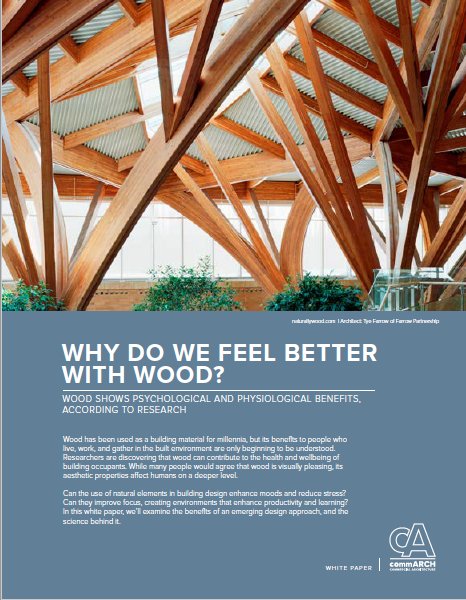
Think Wood is leading the conversation on wood’s role in improving people’s health and well-being through biophilic design, an emerging trend that explores the psychological and physiological benefits of connecting building occupants more closely with nature. Think Wood’s push comes as communities across the United States are increasingly focused on mental health and well-being, with implications for developers, architects, and everyday consumers.
As part of its media outreach efforts, Think Wood has published a new white paper on biophilic design, “Why Do We Feel Better With Wood?” which includes academic research, expert insights, and case studies from Duke University Health Facilities and Portland, Oregon’s Union Way Shopping Center. This asset plays into Think Wood’s “discover, engage, grow” communications strategy, which uses media placement to generate new contacts for the Think Wood database. To date, two-thirds of the individuals that downloaded the white paper were net new contacts to Think Wood.
The white paper is currently live on the commARCH website and being promoted through an integrated marketing campaign led by commARCH that includes social promotion, web banners, and email communications.
WoodWorks Launches Online Community for Developers and Building Professionals
WoodWorks has launched a new online community, the WoodWorks Innovation Network (WIN), to connect developers with design and construction professionals who have experience with innovative wood construction systems and technologies. WIN builds on WoodWorks’ decade long experience in connecting people with technical support to increase their knowledge of wood building design, resolve issues, and move projects forward using wood. WIN also offers members a chance to showcase their projects through an interactive map and search directory as well as to connect with WoodWorks staff to request technical assistance.
During its pilot phase, WIN is focused on mass timber systems, As its membership grows, it will expand to include off-site modular, innovative light-frame, and other building systems.
Industry News
Uptick in Housing Permitting Signals Brighter Days Ahead
According to reporting from the U.S. Census Bureau, privately-owned housing starts in May were 4.3% above the revised April estimate; single-family starts were nearly flat at 0.1% above the revised April estimate. However, permits for both segments came in substantially above revised April estimates, at 14.4% and 11.9% above, respectively. This bump in permitting foretells much-needed future gains for single-family starts. Since reaching its year-to-date peak in February, the pace of single-family construction has declined 35% as of May.
Construction starts for the multifamily sector increased 15% in May compared with the revised April estimate; however, the segment has seen a 52% decline relative to its strong start in January 2020. NAHB anticipates that multifamily construction will decline more than single-family as a result of the 2020 downturn.
Quebec Firm Combines Mass Timber and Engineering Innovation in Monaco Project
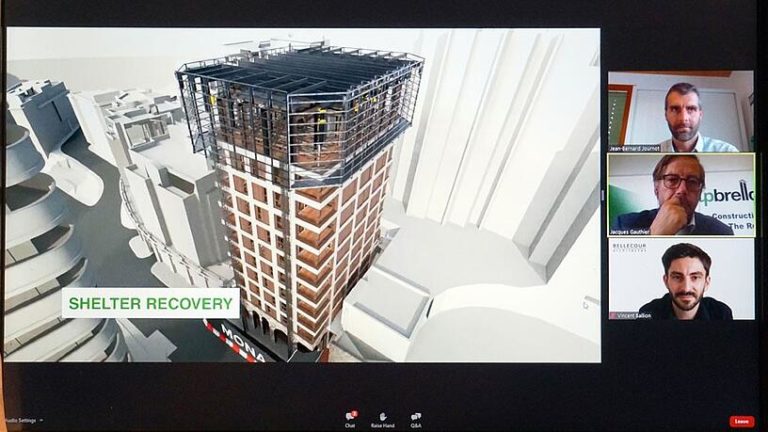
Upbrella Construction, in Brossard, Quebec, will soon begin construction of a 12-story CLT/concrete hybrid tower in Monaco without the assistance of a crane. Upbrella’s engineering system instead relies on a combination of off-site construction and elevator-type actuators, which lift components into place when ready.
Monaco strictly regulates noise emanating from construction sites, so Upbrella’s system offers a feasible and cost-efficient way to comply. Approximately 80% of construction will be done at worker-height under a shelter, thus also minimizing safety risks.
Read more about the project here.
New Campaign Promotes Careers in Lumber
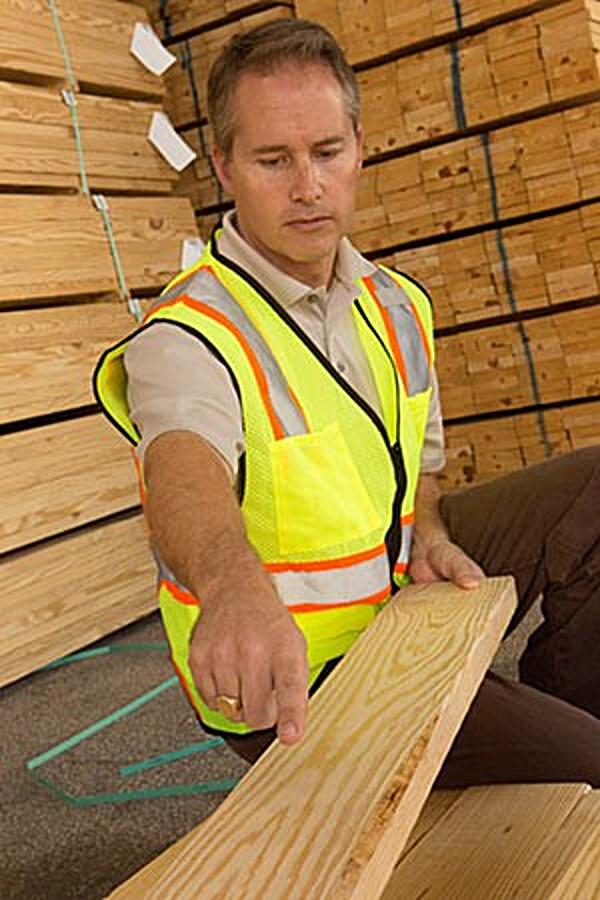
The North American Wholesale Lumber Association recently launched the Keep Up campaign to help educators, students, and soon-to-be graduates learn more about the promising career opportunities lumber offers and how the industry is an important tool in the fight against climate change. The campaign stresses the competitive benefits and salaries, diverse opportunities, and innovation found in the industry. It also seeks to reverse outdated stereotypes that are hindering the industry from attracting the next generation of its workforce.
Read more about the campaign here.
New Online Tool Supports Mass Timber Design
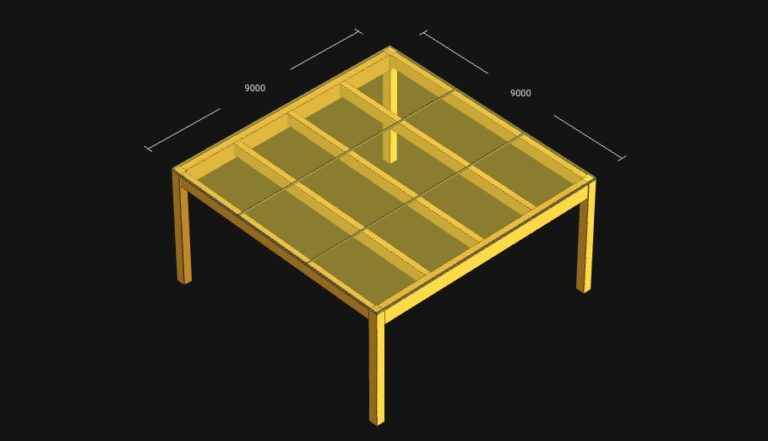
Structural engineering firm Fast + Epp has released a new online design tool—Timber Bay Design Tool—to help architects, designers, developers, and builders explore mass timber for their projects. The tool provides mass timber member sizes, volume outputs, and a 3D visualization of any mass timber grid, along with structural depth and material takeoffs. The Timber Bay Design Tool is part of Fast + Epp’s Concept Lab collection of web applications.
Read more here.
UBC Team Pushes Forward With Virtual-Reality Forest-Planning Tool
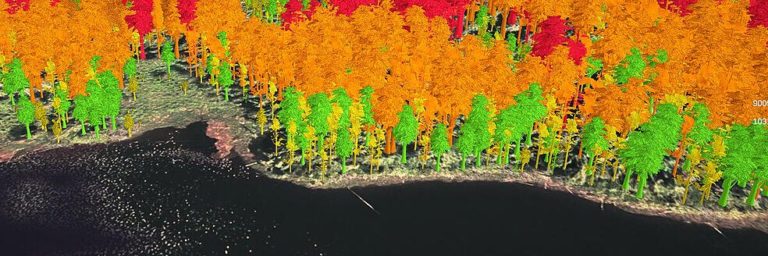
The Faculty of Forestry at the University of British Columbia (UBC), in partnership with FPInnovations and spatial analytics firm LlamaZOO, was recently awarded a $300,000 UBC Ignite grant to further develop and commercialize TimberOps, a new immersive-analytics platform for improved forest operations and land management.
TimberOps creates digital landscapes using different datasets that incorporate all aspects of forest-management planning, from road surveying to cutblock planning. Users then access and explore these landscapes—however vast—using virtual reality. In addition to refining TimberOps, funding will also support a training and demonstration facility for UBC forestry students and industry members to support the use of data in landscape-level forest resources management.
Read more here.
New 12-Story Mass Timber Hotel Enabled by Early Adoption in Canada

In Kelowna, British Columbia, early adoption of provincial regulations allowing for tall wood construction projects has paved the way for a 12-story mass timber hotel tower, which is being developed by RPB Hotels and Resorts and designed by HRD. Construction is expected to start in 2021, and once complete, the building will be the first wood-frame high-rise and the tallest mass timber tower in the city.
The tower will be constructed using partial encapsulation and exposed CLT and glue laminated timber; exposed wood will punctuate the interior and exterior. The developers pursued mass timber from the start because of its environmental benefits, potential savings in construction, unparalleled aesthetics, and the city’s connection to the forestry industry.
Read more about the project here.
British Designer Chose Wood as ‘Welcoming’ for Healthcare Facility
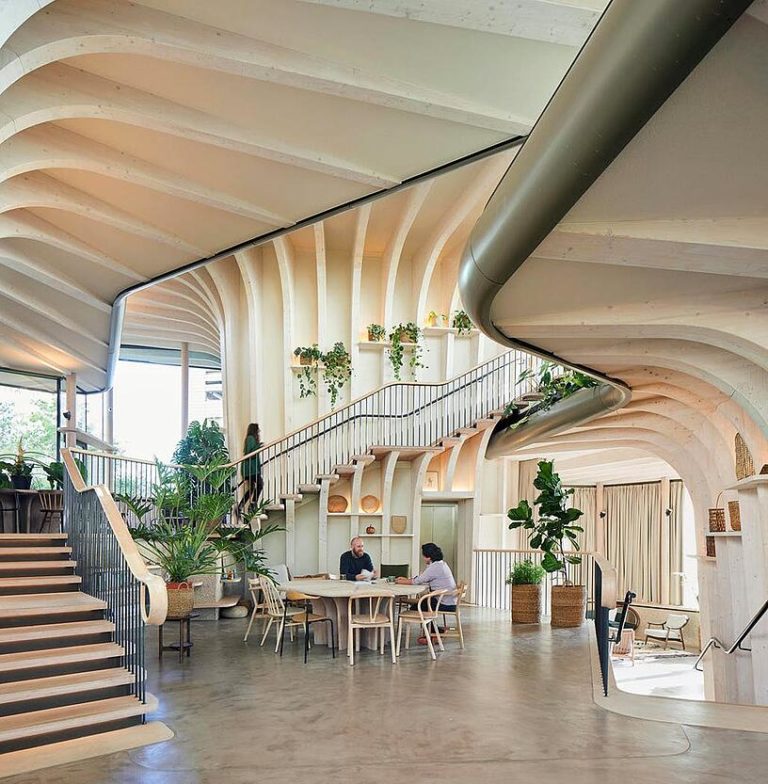
British designer Thomas Heatherwick was purposeful in specifying wood when designing a new Maggie’s Centre within St. James’ University Hospital, in Leeds, England. Maggie’s Centre is a network of centers that provide free cancer support and information across the United Kingdom. Heatherwick chose wood to create an environment that is “soulful and welcoming, unlike other typical clinical environments.” The project, now complete, features an ample timber structure and a green roof.
Read more about the project here.
Washington State and Vaagen Timbers Partner Under Forest Health Initiative
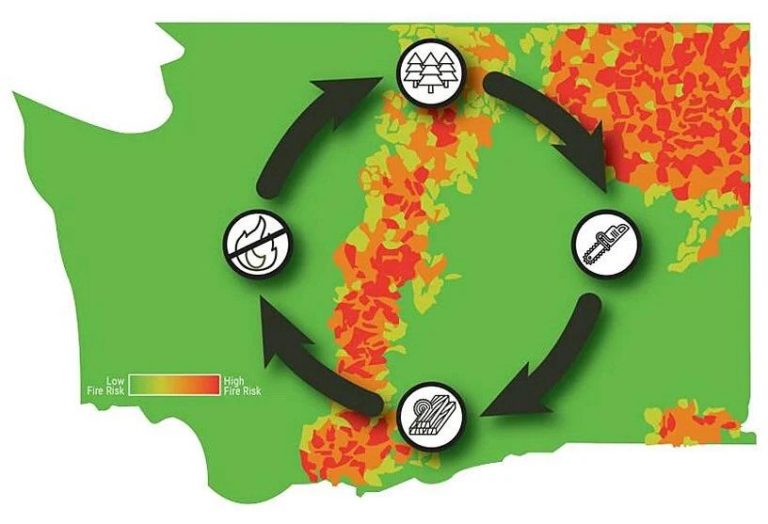
CLT manufacturer Vaagen Timbers is partnering with the Washington State Department of Natural Resources on a forest health initiative to cultivate local economic benefits while also reducing wildfires and the damage they cause.
Under the initiative, the Department of Natural Resources removes small-diameter, diseased, and dying trees and underbrush from publicly owned land, which firms like Vaagen then use to manufacture CLT and other wood products, sustaining jobs and helping to meet growing market demand. Vaagen, based in Colville, Washington, currently has the capacity to produce approximately 2 million square feet of three-ply CLT annually and sources about half of its wood from public lands under the program.
The program is also delivering the fire-management impact sought by the state, with the number of acres burned annually declining as acres thinned goes up. According to Hilary Franz, the state’s commissioner of public lands, the forest health initiative is creating “a huge environmental and economic win that we often don’t see enough of.”
Read more here.
Insights on the Competition
Concrete Masonry Checkoff Sets Timeline Toward Approval
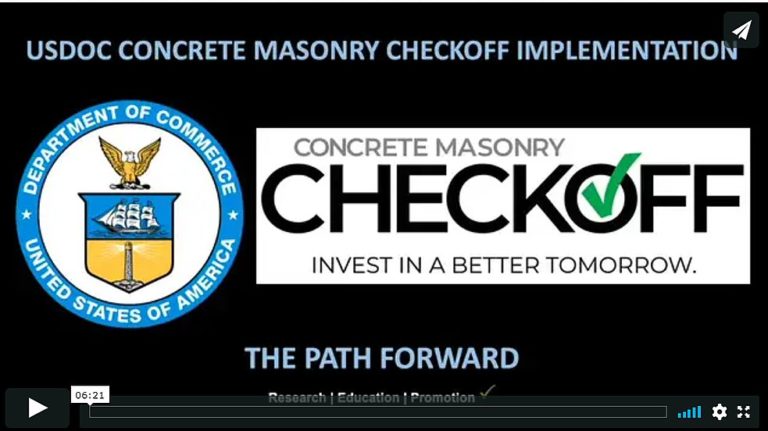
On July 2, the U.S. Department of Commerce (USDOC) announced its implementation plan for the concrete masonry checkoff order. Similar to the SLB and other checkoffs, the proposed concrete masonry checkoff will enact a research, education, and promotion program for concrete masonry products funded by assessments on industry members. Over the next several months, USDOC will release three Federal Register notices, each followed by a 30-day public comment period, leading to a referendum vote on the proposed order from October 15 to November 15. If the vote is in the affirmative, the order will go into effect, and USDOC will proceed with establishing a board.
Read more about the checkoff’s path forward here.
Industry Resources
Virginia Tech’s Monthly Housing Report
This monthly housing commentary report is a free service of Virginia Tech and is intended to help one gauge future business activity in the U.S. housing market.
May 2020 Reports (released in July 2020)
Part A: May Housing Commentary
Part B: May Economic Conditions



